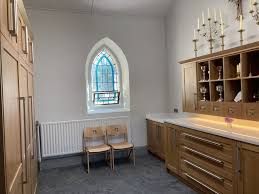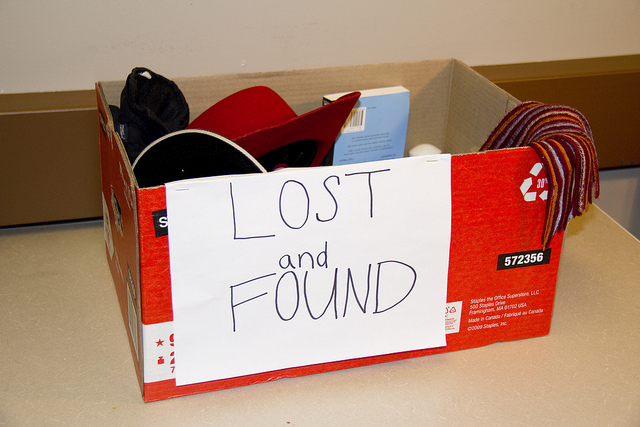
There are certain rooms in parish life where the veil between heaven and earth grows thin. The sanctuary at the Eucharist. The parish hall during a potluck. And, of course, the sacristy — where holy chaos and divine order meet for tea at 8:00 a.m. sharp.
If you’ve ever ventured behind the curtain on a Sunday morning, you know the sacristy is a place of deep mystery. It is where half-burned candles go to retire, where purificators multiply like rabbits, and where at least one drawer contains so many unlabeled keys that I’m convinced some of them open doors in Narnia.
It’s also the place where I, the rector, stand heroically juggling chasubles, last-minute announcements, and the occasional acolyte who has “just remembered” they can’t carry the gospel book today because they “sprained a wrist petting the cat.”
Sacristies, for all their clutter and comedy, are sacred spaces of preparation. Here, between the frantic hunt for a matching set of chalice veils and the discovery that someone has stored a tea towel inside the thurible (don’t ask), we breathe and remember why we’re doing any of this.
It is the sacristy that holds our vulnerability. It sees us before the procession dignity kicks in: clergy adjusting collars, servers negotiating candle lighter etiquette, wardens muttering prayers that sound suspiciously like, “Oh Lord, not this again.” The sacristy is the workshop of reverence, stitching together the small human surrenders that make worship possible.
And in those moments — amid the lint rollers, rogue surplices, and the mysterious stain on the fair linen (origin unknown, inquiry ongoing) — God meets us. Not after we’ve perfected things, but right there in the holy mess. Grace shows up between a crooked stole and a mismatched burse, reminding us that God has always done God’s best work with people who are trying their best while tripping over the occasional alb hem.
So here’s to the sacristy: the backstage of the Kingdom, the cradle of preparation, the spiritual equivalent of a family kitchen just before company arrives. It may never make the tour brochure, but it’s where half our ministry happens. And sometimes — just sometimes — when the right candle lighter appears and the choir is on time — you can even feel the angels chuckling.
Companion Prayer
Holy and gracious God,
You who meet us in the sanctuary and in the sacristy,
in the polished moments and the wonderfully unpolished ones,
Bless all who prepare for worship—clergy, servers, sacristans,
wardens, musicians, and those who straighten the hymn numbers
at the very last second.
In our holy chaos, grant us calm; in our fumbling, grant us grace;
and in all things, let your joy be our strength.
Make our preparations acts of love, our mistakes occasions for mercy,
and our worship a true offering of praise.
Through Christ, who meets us in both reverence and laughter.
Amen.







:max_bytes(150000):strip_icc()/Rosle_StainlessLadle_HeroHoriz-d8d244f5fd27472cbd865f6f34acf336.jpg)